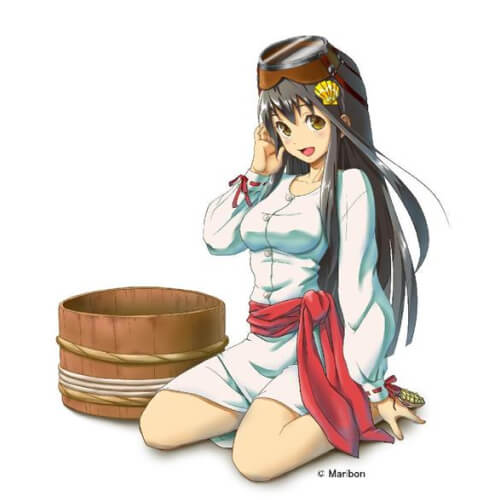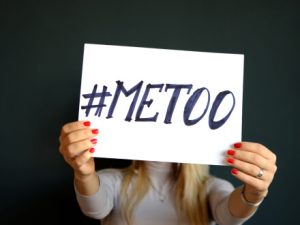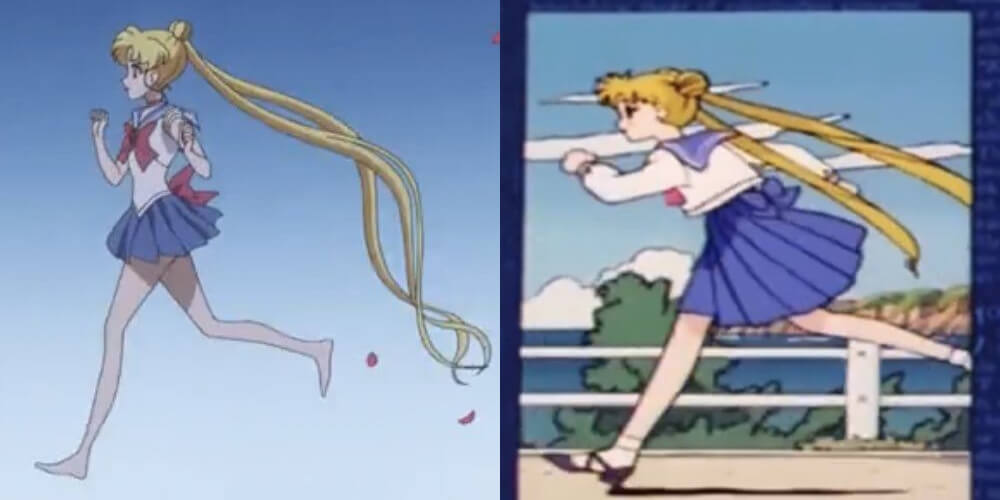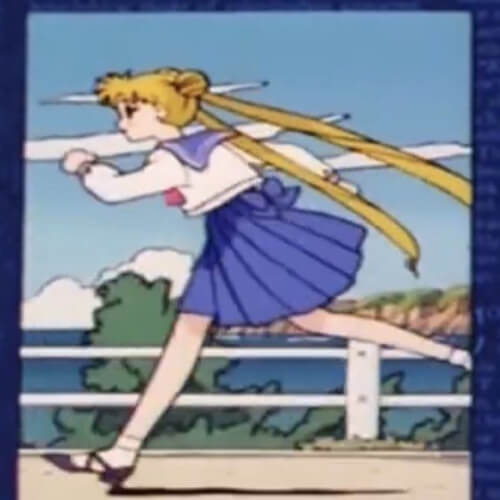- Cultural Values through Anime Character Depictions
- Controversy Over the “Girly Run” in the 2016 New Sailor Moon
- Thriving Otaku Culture and Public Use of Anime Characters
- Controversies Sparked by the Use of Female Characters
- Case 1 – Promotional Anime Made By the Ministry of the Environment Featuring Moe Characters of High School Girls
- Case 2 – Self-Defense Force Recruitment Poster Featuring Girls Who Appear to Be Showing Underwear
- Case 3 – A 17-Year-Old Ama Diver Character in Shima City in Mie Prefecture
- Case 4 – Traffic Safety Awareness Video Featuring a Vtuber Girl in a Short Skirt with Exposed Skin
- Corporate Ad Backlash on Female Illustrations
- Sexual Depiction vs Freedom of Expression
- The Presence of Vocal Feminists
- Rapid Evolution of Gender Equality
- Final Thoughts
Cultural Values through Anime Character Depictions
Japan, known as the anime powerhouse, boasts diverse characters across various genres, and most Japanese people have grown up watching anime, sometimes even learning important life lessons through it.
However, upon examining the stories, character portrayals, and behaviors in these anime, one can find that the societal values, gender perspectives, and ethics of that time are strongly reflected in them even if the creators did not intend it.
For example, while unrelated to feminism, Hoshi Ittetsu from the classic Japanese baseball anime, ‘Star of the Giants,’ which aired in 1968, exemplifies the typical stern and stubborn father figure of the Showa era (1926 to 1989).
He imparts a Spartan baseball education to his son, Hyuuma, often using physical violence, like hitting and kicking. Today, such behavior would likely be reported to the police as child abuse.

Father Ittetsu is delivering blows to his son Hyuuma, while his sister reacts with an OMG expression.
The Depiction of Female Characters
When considering feminism in contemporary Japan, one cannot overlook how female characters are depicted in anime.
For a long time in Japan, anime and manga have thrived within a male-centric culture. Occasionally, the depiction of female characters in an extremely girlish or sexually suggestive manner, which was not considered a serious problem even by women before, has sparked controversies in recent years, particularly in this internet era.

The 17-year-old character ‘Megu Aoshima’ caused controversy in Shima City, Mie Prefecture in Japan.
Image source: Yahoo News Japan
(Note: I grew up watching Japanese anime and reading manga since I was a little girl, and I have zero intention of expressing any critical opinions as a woman regarding this issue in this article. )
Controversy Over the “Girly Run” in the 2016 New Sailor Moon
The running style of the new version of the Sailor Moon, released in 2016, became a subject of controversy following one tweet by a female fan:

English Translation:
Speaking of being ‘girly,’ the way Sailor Moon runs in the old and new versions is so different. I disliked the unnatural, off-balance Otome-Bashiri (girly run) in the new version; it was extremely creepy. Running like that is more difficult. I couldn’t stand the frustration with the new Sailor Moon, so I didn’t watch it😣She runs properly in the old version. The indoctrination of the stereotype of ‘girls’ is very unpleasant and unbearable to watch.
- New version – Sailor Moon Running
- Old version – Sailor Moon Running
The person who posted the tweet continued to criticize.
English Translation:
The emphasis on cuteness and fragility in her movements is so extreme that they appear highly unnatural for a real human, which creates a strong feeling of discomfort. After finding her running style creepy, I couldn’t bring myself to watch the new version anymore. I also dislike the recent trend in anime where female characters have overly flexible and squishy bodies, making them seem as if they’ve been soaked in water.
The New Sailor Moon is Girly and Feminine
This tweet sparked a certain discussion and, as expected, opinions were divided. Among the supporters, many expressed irritation with the new Sailor Moon, finding her overall too excessively girly, including her running style.
There were also negative opinions about some unnecessary depictions, seemingly added just to emphasize feminine features, such as blushing cheeks and accentuated breasts.
- New version – Sailor Moon Transformation
- Old version – Sailor Moon Transformation
The Old Sailor Moon is Active and Energetic
In the original Sailor Moon series, her running style is not what one might call a typical “girly run”. Instead, it is a lively and energetic way of running that conveys Usagi (Serena)’s full-of-life and active nature. Overall, she is not depicted in a stereotypically feminine and girly manner in the old version.

Old version – Sailor Moon Running
Sailor Moon Fan Reactions
Sailor Moon, beloved for over 30 years, received some dissatisfaction from certain female fans upon the release of its new version. In response, other Sailor Moon enthusiasts expressed differing opinions:
- “They are just overthinking it.”
- “The new version is actually closer to the original manga.”
- “Criticism should not solely focus on trivial aspects like her running style, as it’s just a small part of the overall story.”
The debate about Sailor Moon’s running style got some attention, but it didn’t turn into a big argument that would affect the release or anything.
Gender Stereotypical Depictions in Anime
Setting aside the Sailor Moon controversy, when considering it in the context of ‘subconscious imprinting’—or the automatic ideas we hold about gender roles in animated characters—we may not recognize them until someone brings them to our attention.
Having witnessed this Sailor Moon controversy first, I could understand why the way she runs was criticized by some fans. As I grew up watching the original Sailor Moon, I do find that the new version appears more girly. However, if I had watched the new Sailor Moon without knowing the debate, I would not have even paid much attention to her running.
What Does “Like A Girl” Mean?
Speaking of the ‘girly run,’ a video created as part of the #LikeAGirl campaign by P&G’s brand Always also generated interest at that time. The adult actors who were asked to ‘run like a girl’ indeed performed a typical girly run.
-P&G: Do Things “Like A Girl”-
Thriving Otaku Culture and Public Use of Anime Characters
Since the early 2000s, otaku culture has found its way into mainstream acceptance, with otaku people gaining a sort of ‘citizenship.’
Once negatively perceived, the term ‘otaku’ underwent a shift to a more positive connotation. Young women and TV stars openly embraced their love for anime and manga, and the cosplay culture began thriving with the advent of social media. Akihabara has become known as a mecca for anime and game fans, gaining international recognition.
The negative image of otaku has gradually diminished, and it has transformed into a culture that Japan proudly shares with the world.

Akihabara – Mecca for anime and game fans
It has been nearly 20 years since this subculture became integrated into Japan’s mainstream society. As a good example, if you live in Japan, you’ll encounter anime characters in various locations. Advertisements and posters for anime series and related merchandise overflow in trains and train stations. Shopping malls, restaurants, and fast-food chains frequently host collaboration menus and events featuring anime characters.

Sailor Moon x Mos Burger – The Tsukimi Focaccia
The Economic Impact of Seichi-Junrei
It’s not only private companies that benefit from using anime characters. Local areas and municipalities are also leveraging anime and its characters for regional development and tourism promotion. “Seichi-Junrei” is a good example.

Festival in Kuki City, Saitama, where the popular anime “Lucky Star” is based.
“Seichi-Junrei” typically refers to a pilgrimage to locations depicted in anime. The word translates to “pilgrimage to holy sites” or “sacred place pilgrimage.” It’s a cultural phenomenon in Japan where fans of anime or manga visit real-life locations that serve as inspiration for settings in their favorite works. These locations could include landmarks, shrines, buildings, or landscapes featured in the anime. Fans often visit these sites to pay homage to the series, take pictures, and sometimes even participate in related events or purchase merchandise.
The economic impact of Seichi-Junrei by anime fans is tremendous, sometimes bringing in millions of dollars in economic effects for popular anime.
While Seichi-Junrei began to attract attention in the mid to late 2000s, since then, regions and local governments have increasingly utilized pop culture such as anime and manga as a means to revitalize local economies.
For example, creating anime and characters based on local landmarks or specialty products, and utilizing them in tourist guides and events, is one such strategy.
Use of Anime Characters in Public Institutions
Building on the popularity of anime, public institutions have also begun to collaborate with popular anime or utilize their own unique characters. Indeed, using anime characters can garner more interest and familiarity from people compared to real-life individuals.
Controversies Sparked by the Use of Female Characters
However, the use of anime characters can stir unexpected backlash. The portrayal of female characters, in particular, has often sparked controversy.
Fans of Japanese anime and manga may have observed that certain female characters often exhibit traits such as excessive exposure and slim bodies with large breasts, emphasizing feminine features despite their young age.
While such works are fine for fans to enjoy, the issue arises when they are used in places where they attract public attention. Especially when utilized by public institutions, criticism tends to become particularly strong.
Let’s see some examples of such controversies that occurred over the past decade throughout Japan.
But before that, let me explain about “Moe” anime. This is because these controversial female characters are generally from the Moe anime genre, or have such characteristics.

Popular Moe Anime – YuruYuri
Characteristics of Moe anime characters often include large eyes, small mouths, and slender bodies. Many of the characters’ hairstyles and colors are unrealistic and unique. Since the target audience for Moe anime is mainly male otaku, some girl characters have features that strongly emphasize femininity, such as overly revealing clothing or slender bodies with large breasts, even though the characters are supposed to be preteens or teenagers.
Now, let’s see four examples that sparked controversy over the use of female characters.
Case 1 – Promotional Anime Made By the Ministry of the Environment Featuring Moe Characters of High School Girls
The campaign on environmental issues created by the Ministry of the Environment had the concept of “Two high school girls teaching an eco-friendly lifestyle to the Earth.”
However, criticism spread on the internet questioning the choice of using high school girls as characters.

The short skirt, pigeon-toed stance, and oversized cardigan sleeves are typical characteristics of a girly anime character.
Image source: The Asahi Shimbun GLOBE+
Case 2 – Self-Defense Force Recruitment Poster Featuring Girls Who Appear to Be Showing Underwear
The poster is a collaboration with the television anime “Strike Witches,” featuring three female characters wearing only upper garments, exposing their legs. The poster depicts underwear-like shadows near the base of the characters’ legs.
While fans of the anime were excited, there was an influx of criticism online, with some labeling it as “sexual harassment” due to the suggestive nature of the poster.

The female characters in “Strike Witches” are generally known for not wearing skirts. What appears to be underwear is actually not underwear, but short pants. In the anime, there is a popular catchphrase that goes, “‘It’s not embarrassing because it’s not panties!’”.
Image source: J-CAST News
Case 3 – A 17-Year-Old Ama Diver Character in Shima City in Mie Prefecture
In 2014, Shima City in Mie Prefecture officially designated Aoshima Megu, a character portrayed as a 17-year-old ama diver, as its official character.

An ama diver refers to a traditional Japanese female diver, known for harvesting seafood such as pearls, seaweed, and shellfish from the seabed. These divers have a long history and are often associated with coastal regions in Japan. The term “ama” literally translates to “sea woman” in Japanese.

With clothing that accentuates the shape of the body, the character is depicted too sexually despite her young age.
Image source: Yahoo News Japan
Case 4 – Traffic Safety Awareness Video Featuring a Vtuber Girl in a Short Skirt with Exposed Skin
The appearance of a female virtual YouTuber featured in a traffic rules awareness video released by the Chiba Prefectural Police sparked controversy, leading to its removal after protests from the National Feminist Legislators’ Alliance.
Criticized for being ‘sexual,’ the character exposed skin, had a prominently large chest, and wore an extremely short miniskirt. Concerns were raised about the necessity of such a character in a traffic safety video intended for children.

A virtual YouTuber named Tojou Linka in a costume resembling a school uniform, wearing a short skirt and a cropped shirt that exposes the stomach.
Image source: Tokyo Shimbun TOKYO Web
Corporate Ad Backlash on Female Illustrations
The cases mentioned above are just a few examples of controversy, and there have been various instances of backlash regarding the depiction of female characters.
While the use of such characters in public projects is particularly prone to criticism, private companies are also no stranger to sparking similar controversies.
Case 1 – Tights Company Faces Criticism for Sexualized Ads
Stockings and tights manufacturer “Atsugi” faced backlash as a campaign they launched on their official Twitter account ignited controversy, leading to an apology.
Illustrations depicting women in tights, which they utilized for their campaign, were criticized for being “sexually suggestive”.
Atsugi had commissioned 30 illustrators to create images of women wearing their products and planned to retweet them on their company account as part of a campaign.
However, some of the illustrations were criticized for depicting women in a manner that was overly sexualized, focusing more on the sexual portrayal of women wearing the tights rather than highlighting the tights themselves.

Illustrations that have received criticism for “sexually objectifying women.”
Image source: Asahi Shimbun Digital
Considering that the target demographic of their products is women, it may be understandable that such illustrations would evoke discomfort.
Case 2 – Controversy Over Manga Featuring Busty High School Girl in Full-Page Nikkei Newspaper Ad
The advertisement was intended to promote the release of the new volume of “Tawawa on Monday,” a manga series, in the Nikkei newspaper.
“Tawawa on Monday” is a short manga series by a popular manga artist Hikaru Nakamura, featuring voluptuous girls.
The illustration in the advertisement, which emphasized the breasts of one of the high school girl characters in the series, caused a backlash.

A full-page advertisement in the morning edition of the Nikkei Shimbun (Japanese Economic Newspaper).
Image source: HuffPost
Sexual Depiction vs Freedom of Expression
When such issues occur frequently, it naturally leads to clashes with the concept of “freedom of expression.”
The line between “sexual” and “non-sexual” varies from person to person, and determining what falls within the bounds of “freedom of expression” is equally subjective, which complicates this issue even further.
In recent years, there have been many cases where works facing controversy are hastily withdrawn or campaigns are canceled in response to public outcry. However, we have to keep in mind that regardless of the nature of the work, there are always creators and fans behind them whose perspectives and opinions should be respected too.
In the case of Tojou Linka, the video was taken down following criticism from feminist groups. However, later, a female representative of the character production company countered this. She stated that all those involved in character creation were women and that they had neither intended nor emphasized any sexual objectification.

Tojou Linka in a police uniform
Image source: Tokyo Shimbun TOKYO Web
Furthermore, the removal of the video led to a counter-protest in the form of an online petition, which gathered around 70,000 signatures.
In campaigns for Atsugi’s tights, the advertising personnel were female, and all the illustrators were women as well.
So, it’s not always the scenario of “men depicting women from a sexual perspective and women rebelling against it.”
“Moe-Style” Illustrations Tend to Attract Controversy
Whether created by a female or male artist, the use of so-called “moe-style” illustrations in spaces where audiences beyond their fan base might see them often invites criticism.
Moe-style illustrations often feature characters, typically young girls, with emphasized feminine traits such as breasts and thighs. Many of these characters are portrayed as teenagers, some wearing school uniforms.

Wagamama High Spec (Game & Anime)
(In that sense, it is kind of rare for Sailor Moon, which is not a “moe-style” illustration and has a predominantly female fan base, to have sparked controversy with its girly depiction.)
The Presence of Vocal Feminists
Controversies surrounding sexualized depictions of women in illustrations have been ongoing for several years. Especially criticism concerning works like anime and manga often tends to escalate further due to the presence of their fans.
Some argue that such criticism is only voiced by a vocal minority of feminists, so what kind of people are vocal feminists exactly?
Twitter Feminists, Known as “Twitfemis”
With the development of social media, discussions on gender theory and feminism have become increasingly active. However, on the internet, rather than constructive discussions, conflicts tend to arise, and feminists who hold extreme opinions (or even those who don’t) on Twitter are often mocked as “Twitfemis” and are regarded as irritating figures who threaten “freedom of expression”.

“Twifemi” is a term derived from “Twitter feminist,” referring to feminists who are primarily active on Twitter. However, the term “twifemi” is often used pejoratively as an insulting term by misogynists. The term may also be used to describe users who exhibit prejudice against men and make discriminatory remarks, often targeting men.
The controversies, especially those on Twitter (x), are quite prominent. For instance, the Sailor Moon running-style debate originally started from a tweet by a fan.
(On Twitter today, there’s a mix of feminists, including genuine ones, those who show feminist behaviors rooted in discriminatory thoughts against men, and fake feminists who promote sexism against women under the guise of feminism. So chaotic!)
Some people tend to react dismissively when controversies arise by attributing them to “Twifemi,” implying that it’s just noise from that small group of people. But is this really the case?
It’s risky to disregard criticism as merely “a few noisy feminists complaining.” These voices may not only come from feminist women but also from parents, including fathers and mothers of teenage daughters, among others.
One thing is true – the emergence of slang terms like ‘Twifemi’ suggests that society may be somewhat allergic to feminism as a whole, whether it’s Twifemi or not.
Rapid Evolution of Gender Equality
For example, the term LGBTQ has become common in Japan only in the past few years. It was just a year ago when heated debates erupted over the use of public baths and toilets by transgender individuals. In general society as well, discussions regarding gender-related issues have significantly increased compared to before.

‘Gender-neutral restroom’ in Tokyo was abolished after just 4 months due to protests over safety concerns.
Japan’s Relatively Muted Response to #MeToo Movement

When the movement began in 2017, it did not create as significant social ripples in Japan as it did in other countries back then.
Japanese culture has taboos regarding topics related to sexuality compared to other nations, creating a prevailing atmosphere where it is difficult to speak out against issues such as sexual crimes and harassment.
However, in recent years, changes have gradually emerged. In 2023, allegations of sexual misconduct by Johnny Kitagawa, the founder of Johnny & Associates, a talent agency specializing in male idols, came to light even after his passing, leading to the dissolution of the agency.
Additionally, in 2024, allegations of sexual misconduct against multiple women surfaced against Hitoshi Matsumoto, a prominent comedian known for shows like “Gaki no Tsukai,” prompting him to suspend his activities to focus on legal proceedings.
Final Thoughts
In every country, there are likely various stereotypes associated with women, men, mothers, fathers, and more. What sets Japan apart is the portrayal of these stereotypes within subcultures such as anime and manga. It’s interesting to examine them closely, isn’t it?
In this article, I’ve delved into feminism in Japan by exploring the depiction of female characters in anime and manga, as well as recent controversies surrounding their representations. However, I’m not trying to give any specific opinions on certain drawings or feminism in Japan, so I hope you just enjoy reading the article.
Side Note:

Sailor Moon condom
Just a fun fact, “Sailor Moon” and the Ministry of Health, Labour and Welfare collaborated to distribute Sailor Moon condoms for free at events as part of a “Sexually Transmitted Infection Prevention” campaign in 2019. It’s great that works like Sailor Moon, which has a predominantly female fan base, actively engage in campaigns about sexuality and spread important messages!







Comments